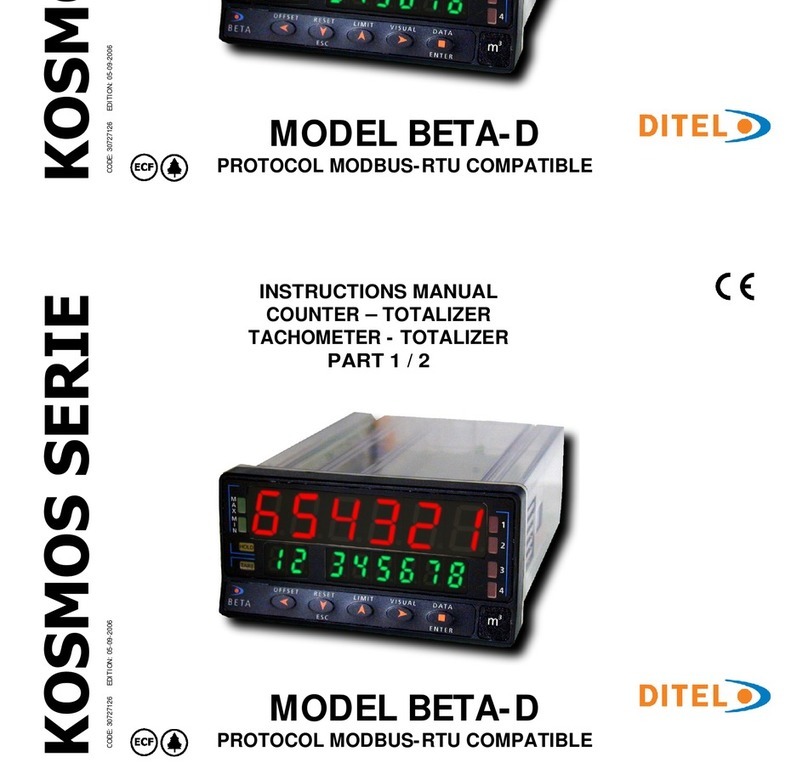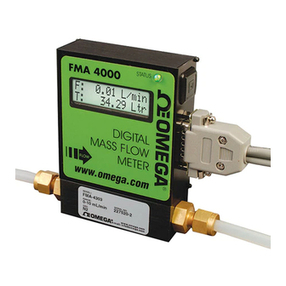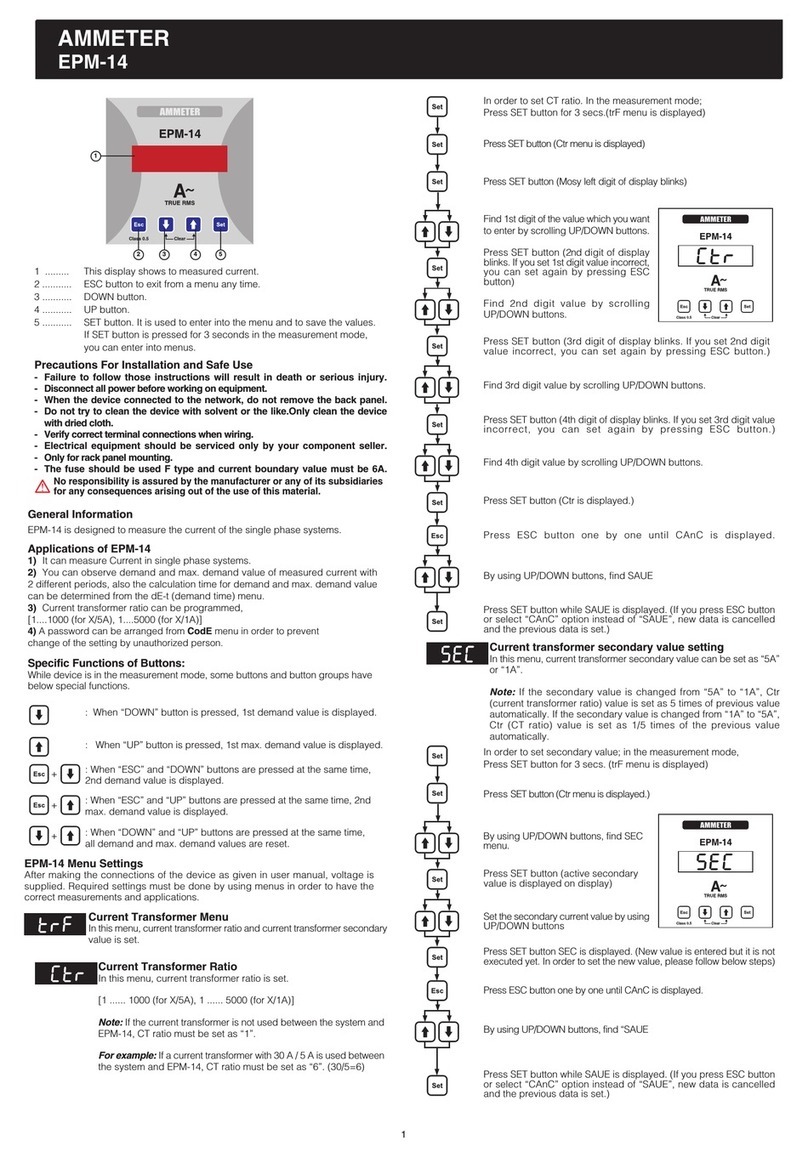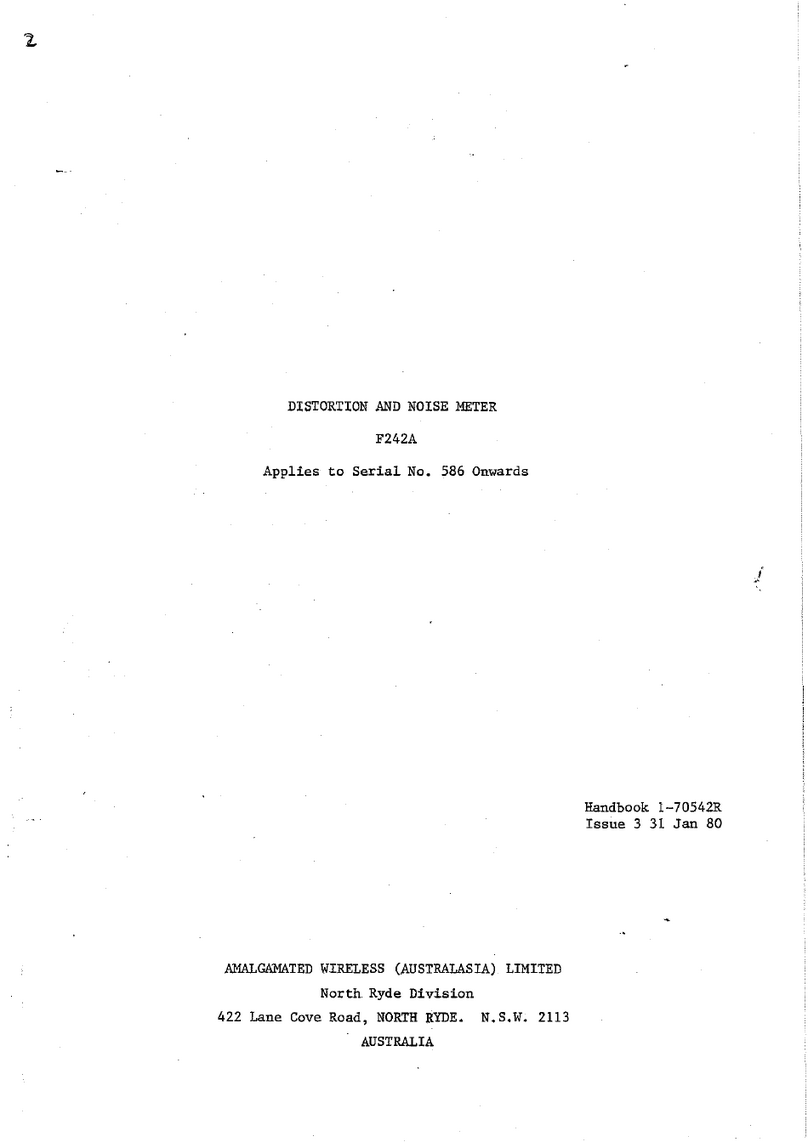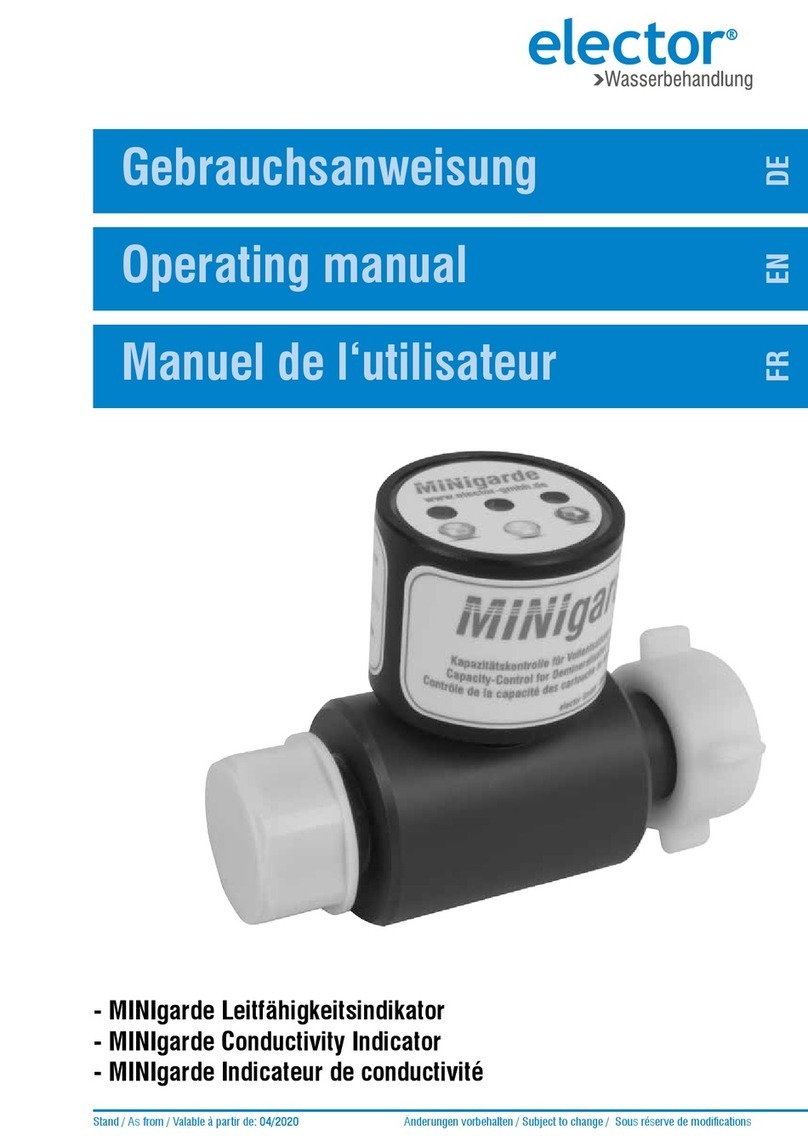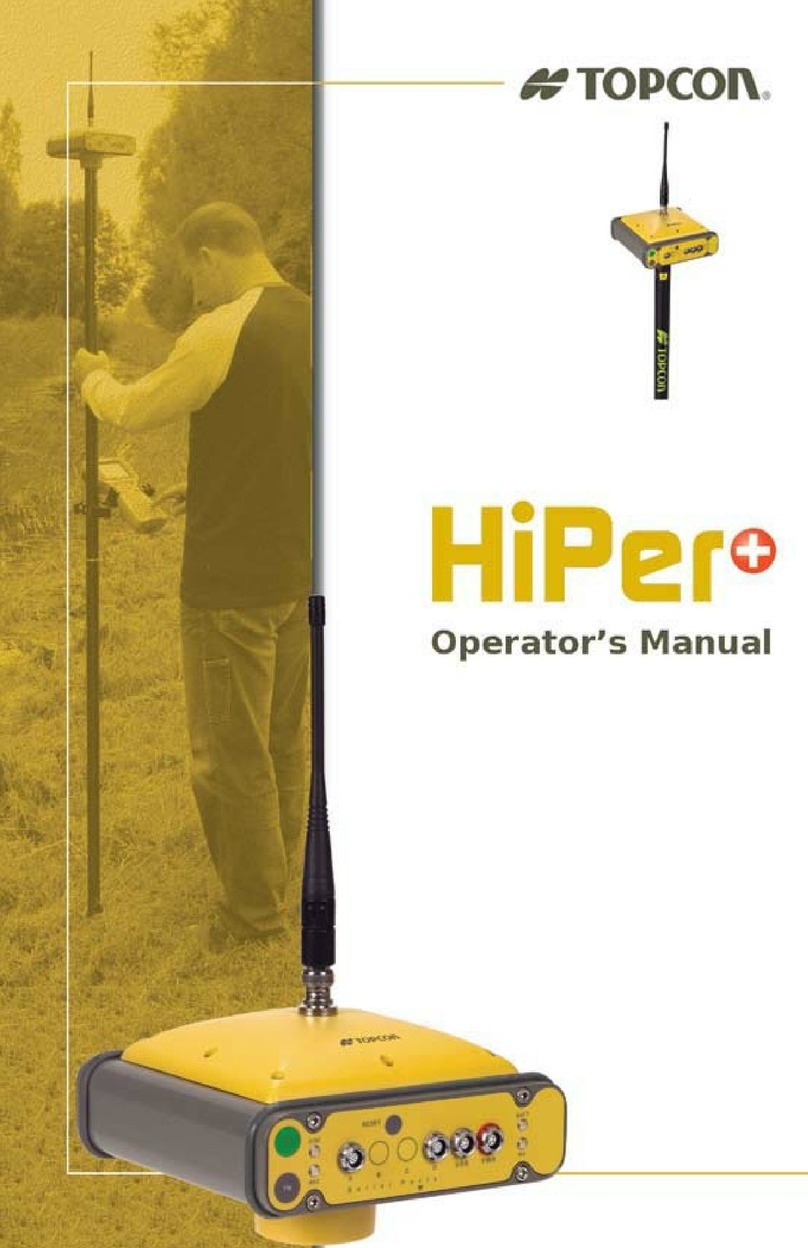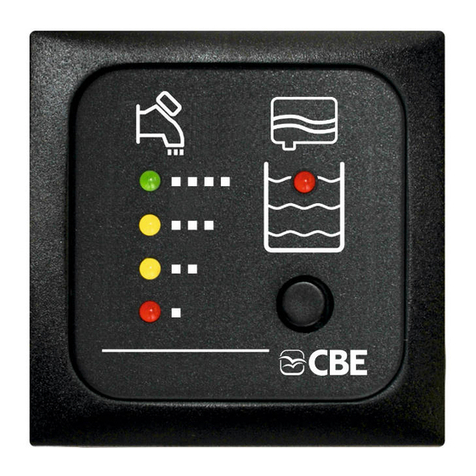Malvern Zetasizer Nano Series User manual

Printed in England MRK1378-01
Malvern Instruments Limited
Enigma Business Park
Grovewood Road, Malvern
Worcs, WR14 1XZ, U.K.
Tel: +44 (0) 1684 892456
Fax: +44 (0) 1684 892789
www.malvern.com
Q &
SelAccessories Guide
Zetasizer
Malvern
nano series
!


Zetasizer Nano
accessories guide
MAN0487 Issue 1.1 April 2013

Copyright © 2007 - 2013 Malvern Instruments Ltd.
Malvern Instruments pursues a policy of continual improvement due to technical development. We
therefore reserve the right to deviate from information, descriptions, and specifications in this
publication without notice. Malvern Instruments shall not be liable for errors contained herein or
for incidental or consequential damages in connection with the furnishing, performance or use of
this material. No reproduction or transmission of any part of this publication is allowed without the
express written permission of Malvern Instruments Ltd.
Head office:
Malvern Instruments Ltd.
Enigma Business Park,
Grovewood Road,
Malvern,
Worcestershire WR14 1XZ
United Kingdom.
Tel + [44] (0)1684-892456
Fax + [44] (0)1684-892789
Zetasizer, Malvern and the 'hills' logo are registered trademarks in the UK and/or other countries,
and are owned by Malvern Instruments Ltd.
NIBS and M3-PALS are trademarks of Malvern Instruments.
M3 is granted Euro Pat No: 1 154 266 DE FR.
Windows is a registered trademark of Microsoft Corporation.
Tygon is a registered trademark of Saint-Gobain Corporation.
Hellmanex is a registered trademark of Hellma GmbH & Co. KG.

Zetasizer Nano accessories guide Page i
Introduction and accessory range
Introduction . . . . . . . . . . . . . . . . . . . . . . . . . . . . . . . . . . . . . . . . . 1-1
Accessory range. . . . . . . . . . . . . . . . . . . . . . . . . . . . . . . . . . . . . . 1-1
General cells and cuvettes
Introduction . . . . . . . . . . . . . . . . . . . . . . . . . . . . . . . . . . . . . . . . . 2-1
Cuvette holder . . . . . . . . . . . . . . . . . . . . . . . . . . . . . . . . . . . . . . . 2-2
Cell and cuvettes . . . . . . . . . . . . . . . . . . . . . . . . . . . . . . . . . . . . . 2-3
Size and molecular weight cuvettes . . . . . . . . . . . . . . . . . . . . . . . . 2-8
Folded capillary cell . . . . . . . . . . . . . . . . . . . . . . . . . . . . . . . . . . 2-12
Dip cell . . . . . . . . . . . . . . . . . . . . . . . . . . . . . . . . . . . . . . . . . . . 2-20
High concentration cell . . . . . . . . . . . . . . . . . . . . . . . . . . . . . . . . 2-25
Surface zeta potential cell . . . . . . . . . . . . . . . . . . . . . . . . . . . . . . 2-29
Surface zeta potential cell
Introduction . . . . . . . . . . . . . . . . . . . . . . . . . . . . . . . . . . . . . . . . . 3-1
Measurement technique . . . . . . . . . . . . . . . . . . . . . . . . . . . . . . . . 3-3
Preparation for measurement . . . . . . . . . . . . . . . . . . . . . . . . . . . . 3-4
Controlling an SZP measurement via an SOP . . . . . . . . . . . . . . . . 3-10
Performing the measurement. . . . . . . . . . . . . . . . . . . . . . . . . . . . 3-16
Maintenance - cleaning the SZP cell . . . . . . . . . . . . . . . . . . . . . . 3-19
Chemical compatibility - SZP cell. . . . . . . . . . . . . . . . . . . . . . . . . 3-20
Flow-mode option
Introduction . . . . . . . . . . . . . . . . . . . . . . . . . . . . . . . . . . . . . . . . . 4-1
Flow-mode . . . . . . . . . . . . . . . . . . . . . . . . . . . . . . . . . . . . . . . . . 4-1
Applications . . . . . . . . . . . . . . . . . . . . . . . . . . . . . . . . . . . . . . . . . 4-2
Connectivity . . . . . . . . . . . . . . . . . . . . . . . . . . . . . . . . . . . . . . . . . 4-3
Exporting the flow-mode data . . . . . . . . . . . . . . . . . . . . . . . . . . . . 4-4
Editing and inspecting a flow-mode result . . . . . . . . . . . . . . . . . . . 4-5
Controlling the flow-mode measurement via an SOP . . . . . . . . . . . . 4-9
Table of contents

Table of Contents Zetasizer Nano accessories guide
Page ii MAN 0487
The Flow-mode measurement display . . . . . . . . . . . . . . . . . . . . . 4-14
Displaying the flow-mode report . . . . . . . . . . . . . . . . . . . . . . . . . 4-15
Microrheology
Introduction . . . . . . . . . . . . . . . . . . . . . . . . . . . . . . . . . . . . . . . . . 5-1
DLS Microrheology . . . . . . . . . . . . . . . . . . . . . . . . . . . . . . . . . . . . 5-1
Microrheology utilities . . . . . . . . . . . . . . . . . . . . . . . . . . . . . . . . . . 5-3
Exporting the microrheology data . . . . . . . . . . . . . . . . . . . . . . . . . 5-4
Controlling the microrheology measurement via an SOP . . . . . . . . . 5-6
Microrheology measurement process. . . . . . . . . . . . . . . . . . . . . . . 5-9
Displaying the microrheology measurement report . . . . . . . . . . . . 5-17
Advanced protein features
Introduction . . . . . . . . . . . . . . . . . . . . . . . . . . . . . . . . . . . . . . . . . 6-1
Controlling a protein mobility measurement via an SOP . . . . . . . . . . 6-4
Performing the measurement. . . . . . . . . . . . . . . . . . . . . . . . . . . . . 6-7
Interpreting the results . . . . . . . . . . . . . . . . . . . . . . . . . . . . . . . . . 6-8
Calculators tool . . . . . . . . . . . . . . . . . . . . . . . . . . . . . . . . . . . . . 6-10

Zetasizer Nano accessories guide Page 1-1
1
Introduction and
accessory range
Introduction
This manual give an overview the accessories that are available for use with the
Zetasizer Nano series of instruments.
This manual is a supplement to the following manuals:
Zetasizer Nano user manual
Zetasizer Nano basic guide
Warning!
The accessories or the samples to be measured may be hazardous if mis-
used. Users must read the health and safety information in the basic
guide before operating the system.
This manual focuses on specific issues of the Zetasizer Nano accessories that are
not covered by the above manuals.
Accessory range
The accessories available for use with the Zetasizer Nano are indicted in the fol-
lowing section. Full descriptions on usage and application are contained in the sub-
sequent chapters. The accessories that can be used will be dependent upon the
instrument configuration and measurement type that will be performed.
Some accessories can be used for differing types of measurements, these are dupli-
cated.

Chapter 1 Introduction and accessory range
Page 1-2 MAN 0487
1
Cells and Cuvettes
Zeta potential measurements
Size and molecular weight measurements
DTS1070 Folded capillary cell
Maintenance-free capillary cell primarily designed for zeta potential
measurements. (This cell is a direct replacement for DTS1060/61).
ZEN1002 Dip cell
Cell used to provide repeatable measurements of aqueous, and
non-aqueous samples. It is particularly suitable for measurements
of valuable aqueous samples where minimal sample quantity is
important.
Use with DTS0012 and PCS1115 cuvette - described below.
ZEN1010 High concentration cell
Cell intended primarily for the measurement of zeta potential on a
concentrated aqueous sample. The cell is suitable for a broad range
of conductivities. It is particularly suitable for measurements of valu-
able aqueous samples where minimal sample quantity is important.
ZEN1020 Surface zeta potential cell
Cell intended for the measurement of the zeta-potential at the sur-
face of a flat material in an aqueous environment.
Use with DTS0012 and PCS1115 cuvette - described below.
DTS1070 Folded capillary cell - This cell can be used for size measure-
ments, in the Zetasizer Nano S, Nano ZS and Nano ZSP only.
(This cell is a direct replacement for DTS1060/61).
DTS0012 Square polystyrene cuvettes - for size and molecular weight meas-
urements.
ZEN0118 Disposable polystyrene low volume cuvette - for size and molecular
weight (90° instruments only).
ZEN0040 Disposable plastic, micro cuvette, for size measurement at a 173°
scattering angle.
PCS8501 Square glass cell with cap (round aperture) - for size and molecular
weight. Also for use with the Dip cell.
PCS1115 Square glass cell with cap (square aperture) - for size and molecular
weight. Also for use with the Dip cell.
ZEN2112 Low-volume quartz batch cuvette - for size and molecular weight.
ZEN0023 Quartz flow cell - for size, intensity measurements and molecular
weight.
Note: All cuvettes have an outside dimension (o.d.) of 12mm

Introduction and accessory range Chapter 1
Zetasizer Nano accessories guide Page 1-3
Cell to Zetasizer Nano instrument compatibility table
The table below indicates which cells and cuvettes are compatible with which
instruments of the Zetasizer Nano range.
The following chapters describe each cell or cuvette in more detail. The aspects
covered are:
Identification of each cell of the dispersion units with guidance on selection.
How to fill each cell with sample and then insert into the Zetasizer Nano
instrument.
Some accessories require configuration of the software and SOP parameters.
Where required the software controls are identified with explanation on how to
use the cells to make measurements on the system.
Maintenance procedures for inspecting and cleaning each cell and its respective
components, including identification of the chemical compatibility of the cell
components that may come into contact with the sample.
Cell Zeta Size MW S Z ZS S90 ZS90 ZSP
DTS1070 •••••• • •
ZEN1002 •••••
ZEN1010 •• •• •
ZEN1020 •• •• • •
DTS0012 ••••••
ZEN0118 •••
ZEN0040 ••• •
PCS8501 ••• •• • •
PCS1115 ••• •• • •
ZEN2112 ••• •• • •
ZEN0023
(SEC systems)
••• •• • •

Chapter 1 Introduction and accessory range
Page 1-4 MAN 0487
Additional accessories and options
A range of accessories and options are also available for more advance measurement
strategies.
MPT-2 Titrator and Vacuum degasser
The MPT-2 Titrator is used to perform pH, additive and dilution titrations. The
degasser is used to remove any dissolved gases from the titrants before dispensing
by the Titrator. This prevents any gaseous escape during the titration increasing the
accuracy and reproducibility.
Usage and operation is described in the MPT-2 Titrator and Vacuum degasser
user manual.
For use with all Zetasizer Nano instruments.
Flow-mode option
Instruments fitted with the flow-mode option can be connected to a size exclusion
chromatography (SEC) system and be used as a light scattering detector.
The following kit is available for use with the Zetasizer Nano when connected to a
SEC system. It includes the flowcell ZEN0023.
Connection, use and operation of a flow-mode optioned Zetasizer Nano is
described in the Flow-mode chapter later in this manual.
For use with all Zetasizer Nano instruments except the Nano Z.
If fitted, an option part number label will be attached to the front of the cuvette
holder. The flow mode option is included as a standard fitment on the Zeta-
sizer Nano ZSP.
High Temperature
These instruments have an increased temperature range of 0to 120.
If fitted the Zetasizer Nano instrument label will include an ‘HT’ identification
and an option part number label will be attached to the front of the cuvette holder.
For use with all Zetasizer Nano instruments except the Nano ZSP.
ZEN1006 Flow-mode option for Zetasizer Nano S and Zetasizer Nano ZS.
ZEN0116 Quartz flow cell kit for connection of the Zetasizer Nano to an SEC
system.
ZEN9063 Extends the upper temperature range of the Zetasizer Nano series
from 90to 120

Introduction and accessory range Chapter 1
Zetasizer Nano accessories guide Page 1-5
Narrow band filter
This filter improves the signal for samples that fluoresce at the wavelength of the
laser fitted. If a filter is fitted, an option part number label will be attached to the
front of the cuvette holder.
For use with all Zetasizer Nano instruments.
Microrheology
Microrheology is a new measurement type available to users of the Zetasizer Nano
ZS and ZSP. It allows the measurement of the viscoelastic modulus of samples
within the linear viscoelastic region.
Microrheology measurements require a software key to access the software features
and functionality.
For use with the Zetasizer Nano ZS and ZSP.
Protein mobility
Protein mobility is a new measurement type, supplied with the Zetasizer Nano
ZSP as standard, and available to purchase separately for the Nano ZS.
The Zetasizer Nano ZSP has increased capability for the measurement of small and
weakly scattering molecules and particles. This increased sensitivity improves the
measurement of zeta potential, with it’s primary purpose being the ability to meas-
ure the zeta potential, or more appropriately the electrophoretic mobility of pro-
tein samples.
The Zetasizer Nano ZS is only capable of making these measurements at higher
protein concentrations (>10-15 mg/ml).
A dedicated measurement type is included for protein mobility and also a suite of
new calculators for proteins.
Protein mobility measurements are available after installing the Advanced pro-
tein features software key.
For use with the Zetasizer Nano ZSP and ZS.
ZEN9051 Narrow band filter for ‘Green’ badged Zetasizer Nano S instruments
ZEN9052 Narrow band filter for ‘Green’ badged Zetasizer Nano ZS instru-
ments
ZEN9061 Narrow band filter for ‘Red’ badged Zetasizer Nano S, Z and S90
instruments
ZEN9062 Narrow band filter for ‘Red’ badged Zetasizer Nano ZS, ZS90 and
Nano ZSP instruments

Chapter 1 Introduction and accessory range
Page 1-6 MAN 0487

Zetasizer Nano accessories guide Page 2-1
2
General cells
and cuvettes
Introduction
Malvern offers a range of cells and cuvettes for performing measurements with the
Zetasizer system. The choice of cell or cuvette is dependent upon the type of
measurement being performed and the sample that will be measured.
The cells or cuvettes available for each measurement type are fully documented in
this chapter with some discussion on their use and application. The aspects covered
are:
Identification of each cell of the dispersion units with guidance on selection.
How to fill each cell with sample and then insert into the Zetasizer Nano
instrument.
Some accessories require configuration of the software and SOP parameters.
Where required the software controls are identified with explanation on how to
use the cells to make measurements on the system.
Maintenance procedures for inspecting and cleaning each cell and its respective
components, including identification of the chemical compatibility of the cell
components that may come into contact with the sample.

Chapter 2 General cells and cuvettes
Page 2-2 MAN 0487
2
Cuvette holder
The cuvette holder is for storing the cells before and after use. The cuvette holder
swings out from under the instrument and up to 12 cuvettes can be stored.
ill 8503
Caution!
Ensure the thermal cap is lowered and all cuvettes have been removed
before swinging the holder back under the instrument base.
The two trays that hold the cuvettes can be removed for cleaning.
The cuvette holder provides a place to store the thermal cap during changeover of
cells. The cap is released by raising the cap and lifting off the cap post. Similarly,
storage is also provided for the two “thermal contact plates” used with the
folded capillary cell. When not being used, place these in the holder to the left of
the tray.
The cuvette holder includes a serial number, model number and option labels.
These identify the instrument and should be quoted in any correspondence with
Malvern Instruments.

General cells and cuvettes Chapter 2
Zetasizer Nano accessories guide Page 2-3
Cell and cuvettes
Which cell
Caution!
Due to the risk of melting, polystyrene cuvettes must not be used for
measurements above 70°C.
The choices for each measurement type are outlined below with some discussion
on their use.
Generally, for “easy to perform” measurements, such as with samples that scatter a
reasonable amount of light (latex with 0.01% mass or higher, high scattering
intensity, etc.) the disposable polystyrene cuvettes can be used.
Disposable polystyrene cuvettes are easily scratched and should never be used
more than once.
Disposable cuvettes are not resistant to organic solvents, thus non-water based
samples should generally be measured in glass or quartz type cuvettes.
The optical quality of the cells is vitally important when performing molecular
weight and low concentration protein measurements (derived count rate
<100kcps), therefore glass or quartz type cuvettes should be used to ensure the
optimum signal is achieved.
Briefly the following cells can be used with the Zetasizer Nano instrument.
All the cells mentioned are available from Malvern and should be used with the
supplied cell caps. Using the caps will ensure greater thermal stability of the
sample, as well as preventing dust introduction and possible spillage.
Cell Application
Disposable “polystyrene” cuvettes
– Standard and small volume Size and zeta potential (with Dip cell)
Quartz glass cuvettes
– Square, standard, low and ultra-
low volume, flow
Size, molecular weight and zeta potential
(with Dip cell)
Folded capillary cell Size and zeta potential
High concentration cell Size and zeta potential
Dip cell Zeta potential
Surface zeta potential (SZP) cell Zeta potential

Chapter 2 General cells and cuvettes
Page 2-4 MAN 0487
Cell and cuvette options
The cells and cuvettes described in this section can be used for all measurements.
Folded capillary cell
(DTS1070 / DTS1060/61)
Disposable polystyrene
(DTS0012)
Application Size, zeta potential Size
Typical solvent Water, water/alcohol Water, water/ethanol
Optical quality Good to very good Good to very good
Minimum
Sample volume
0.75ml 1ml
Advantages Low cost
Single use disposable (no
cleaning)
Use with MPT-2 Titrator
No sample cross-
contamination
Fast sample change over
(This cell is described later in
this chapter)
Low cost
Single use disposable (no
cleaning)
No sample cross-
contamination
Disadvantages Not resistant to organic
solvents
Unsuitable for use at high
temperatures (above 70°C)
Not resistant to organic
solvents
Unsuitable for use at high
temperatures (above 70°C)
Material Polycarbonate Polystyrene

General cells and cuvettes Chapter 2
Zetasizer Nano accessories guide Page 2-5
Disposable low volume
polystyrene (ZEN0118)
Disposable low volume
polystyrene (ZEN0040)
Application Size Size
Typical solvent Water, water/alcohol Water, water/alcohol
Optical quality Good to very good Good to very good
Minimum
Sample volume
50μl 40μl
Advantages Low cost
Low volume
Single use disposable (no
cleaning)
Low cost
Low volume
Single use disposable (no
cleaning)
Disadvantages Requires careful filling to
avoid bubbles
Not resistant to organic
solvents
Unsuitable for use at high
temperatures. (above 70°C)
Only 90°C systems
(Zetasizer Nano S90, ZS90,
Zetasizer μV)
Requires careful filling to
avoid bubbles
Not resistant to organic
solvents
Unsuitable for use at high
temperatures. (above 70°C)
Only applicable to systems
with NIBS optics
(Zetasizer Nano S/ZS/ZSP)
Material Polystyrene Polystyrene
Glass - square aperture
(PCS1115)
Glass - round aperture
(PCS8501)
Application Size, molecular weight Size, molecular weight
Typical solvent Water, most organic and
inorganic solvents
Water, most organic and
inorganic solvents
Optical quality Excellent Excellent
Minimum
Sample volume
1ml 1ml
Advantages Highest optical quality
Can use nearly any
dispersant
Reusable
Highest optical quality
Can use nearly any
dispersant
Disadvantages Requires cleaning after
measurement
Requires cleaning after
measurement
Material Glass Glass

Chapter 2 General cells and cuvettes
Page 2-6 MAN 0487
Low volume Glass flow
cell (ZEN0023)
Low volume quartz
(ZEN2112)
Application Size Size
Typical solvent Water, most organic and
inorganic solvents
Water, most organic and
inorganic solvents
Optical quality Excellent Excellent
Minimum
Sample volume
75μl plus tubing 12μl
Advantages Highest optical quality
Can use nearly any solvent
(tubing dependent)
Use with MPT-2 Titrator
Highest optical quality
Can use nearly any
dispersant
Low sample volume
Disadvantages Requires cleaning after
measurement
With manual use requires
careful filling to avoid bubbles
Requires cleaning after
measurement
Requires careful filling to
avoid bubbles
Material Glass Quartz
Low volume Glass flow cell pack (ZEN0116)
Application Size as part of a Flow-mode (SEC) system
Refer to ZEN0023 for description of cell
Includes:
- ZEN0023 flow cell
- Connections for cell
- 1.5m PEEK tubing (1/16th
inch outside diameter /
0.1mm inside diameter)
Refer to the Flow-mode chapter later in this manual for
connection, use and operation.

General cells and cuvettes Chapter 2
Zetasizer Nano accessories guide Page 2-7
Use, cleanliness and filling advice
Note
Before filling and using a cell or cuvette, consult the cleaning section for
each cell or cuvette, and perform any cleaning and maintenance proce-
dures described.
When filling the cell there are several actions to consider; some that apply to all
cells and others that are only applicable to the measurement type and the cell
chosen.
The cleanliness of the cells used in each measurement is a paramount importance.
As well as the information below, refer to the respective cleaning cells/cuvettes
section for each cell, where more specific advice will be given.
Size cells and cuvettes
All size cells should be rinsed/cleaned with filtered dispersant before use.
Molecular weight cells and cuvettes
All molecular weight cells should be rinsed/cleaned with the filtered standard
(e.g. Toluene) or solvent, then dried in a dust free environment such as a lami-
nar flow cabinet, before use.
Zeta potential cells
All zeta potential cells should be rinsed/cleaned with filtered dispersant
before use.
Additionally
The cell should be filled slowly to avoid air bubbles from being created. Ultra-
sonication can be used to remove air bubbles - but only if the sample is suitable
for use with ultrasonics.
If using syringe filters for the dispersant, never use the first few drops from the
syringe, in case there are any residual dust particles in the filter that may con-
taminate the dispersant.

Chapter 2 General cells and cuvettes
Page 2-8 MAN 0487
Size and molecular weight cuvettes
Filling a cell or cuvette
Fill the cell with the prepared sample as described below. Also refer to the filling
advice given earlier in this chapter.
Standard cuvettes
A minimum sample volume must be provided. However, this minimum volume
depends on the actual cell type and it is easier to ensure a certain depth of the
sample in the cell.
This minimum is 10mm from the bottom of the cell (the measurement is made
8mm from the bottom of the cell).
ill 8506
Do not overfill the cell, use about 15mm maximum, as this can produce thermal
gradients within the sample that will reduce the accuracy of the temperature
control.
When filling, tilt the
cuvette and allow it to fill
slowly.
To stop bubbles forming
let the sample flow down
the inside.
ill 7935
Min. 10mm
Max. 15mm
Other manuals for Zetasizer Nano Series
3
Table of contents
Other Malvern Measuring Instrument manuals

Malvern
Malvern Hydro 2000uP User manual
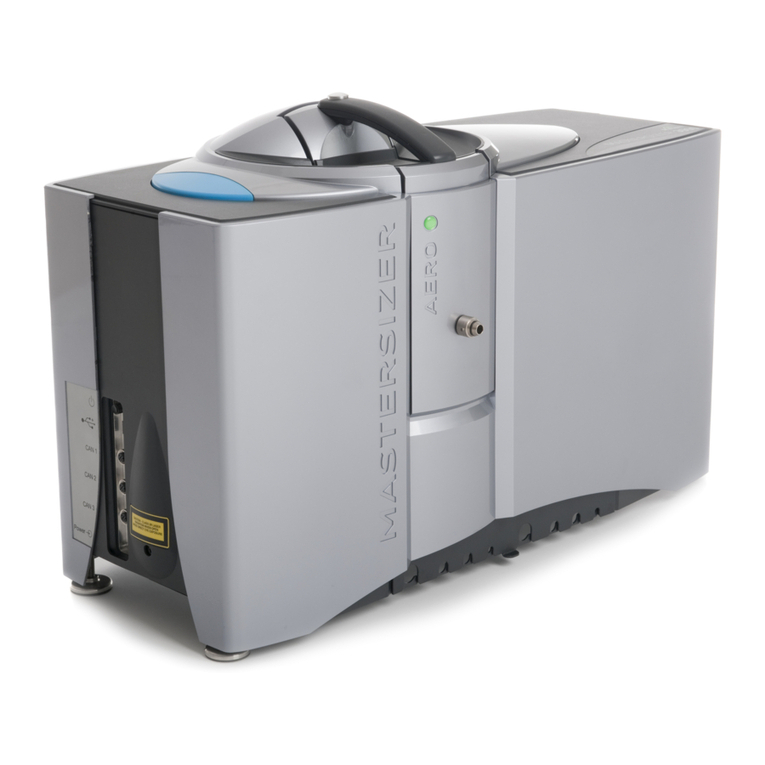
Malvern
Malvern Mastersizer 3000 User manual

Malvern
Malvern NANOSIGHT NS300 User manual
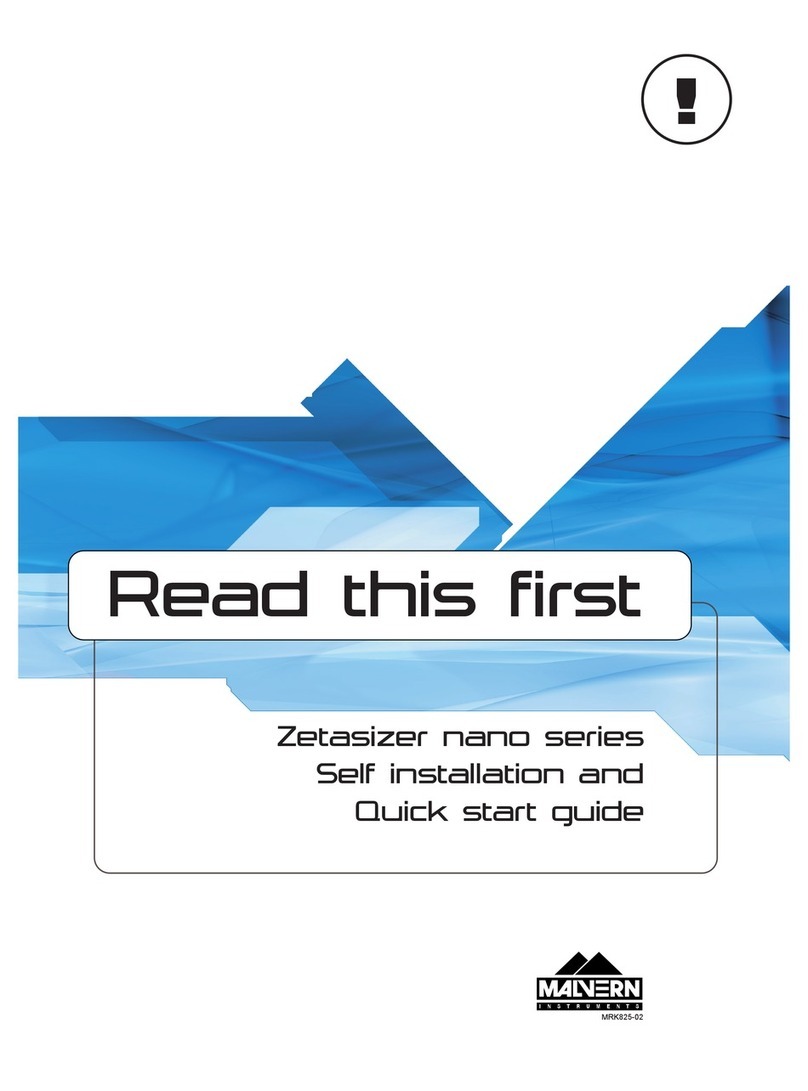
Malvern
Malvern Zetasizer Nano Series User manual
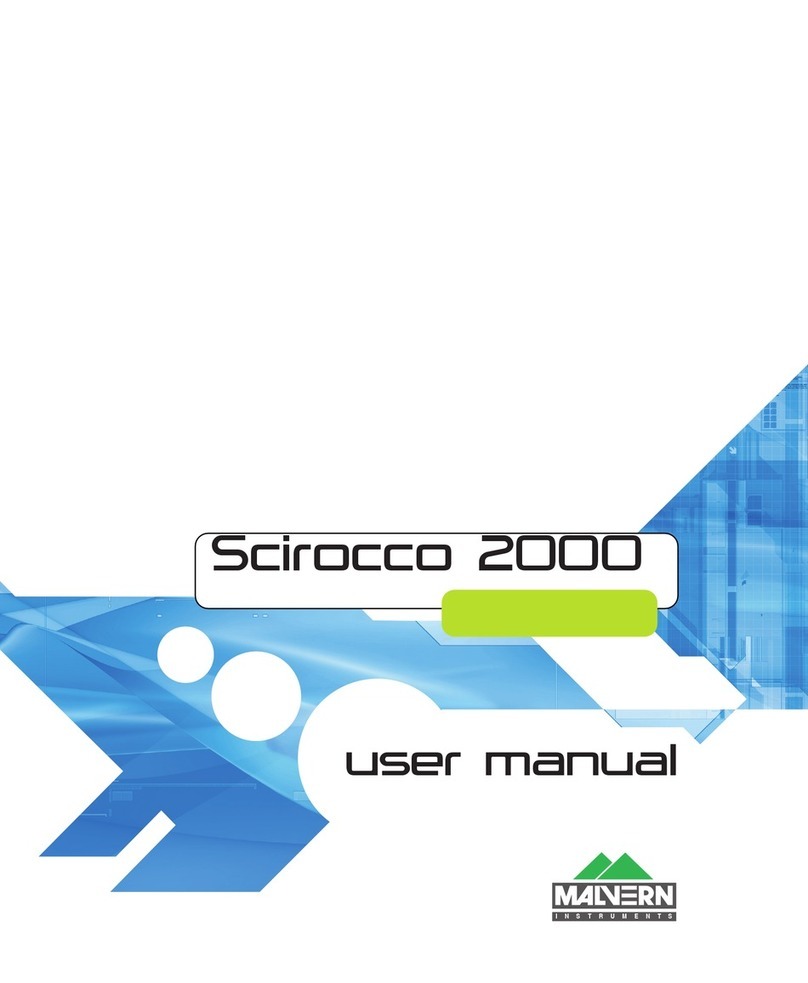
Malvern
Malvern Scirocco 2000 User manual

Malvern
Malvern NANOSIGHT NS300 User manual

Malvern
Malvern Mastersizer Series User manual

Malvern
Malvern Hydro 2000 G User manual
Popular Measuring Instrument manuals by other brands

PSI
PSI PlantPen PRI 200 instruction manual
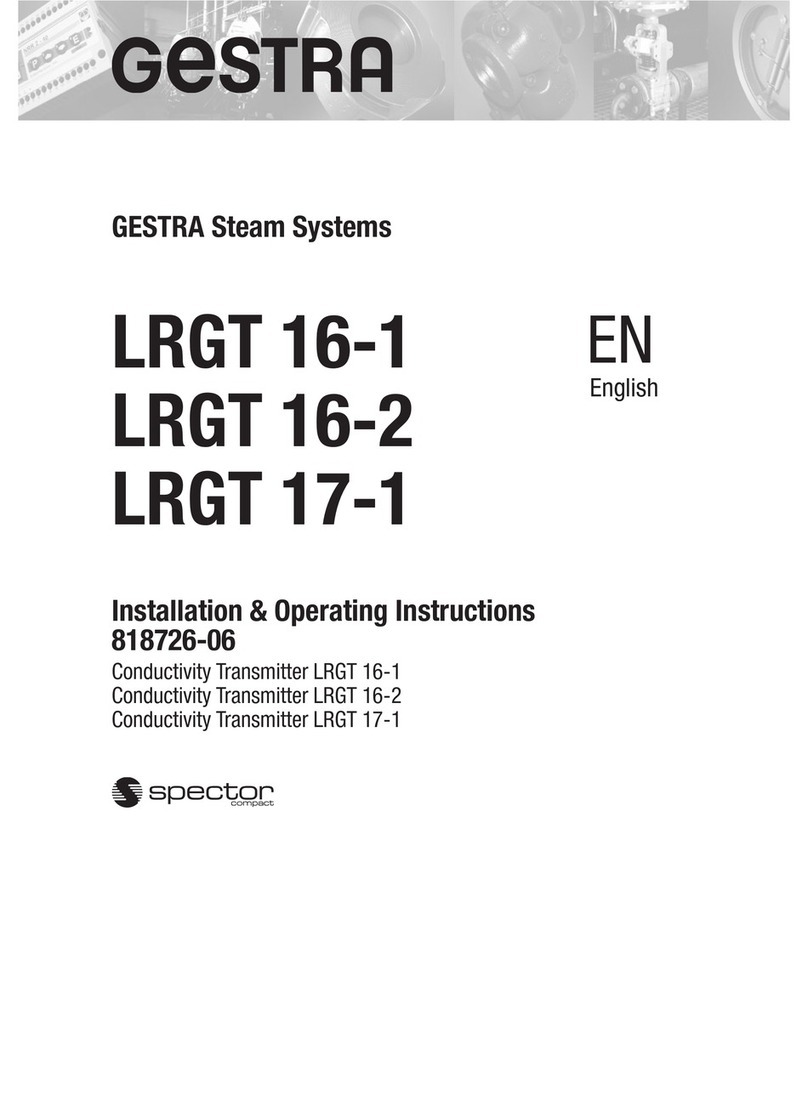
GESTRA
GESTRA LRGT 16-1 Installation & operating instructions

Optima Scale
Optima Scale OP-916 user manual

Armada Technologies
Armada Technologies Pro50 instruction manual

BIC
BIC BI-200SM instruction manual

FW Murphy
FW Murphy TDX6 Installation and operation instructions

